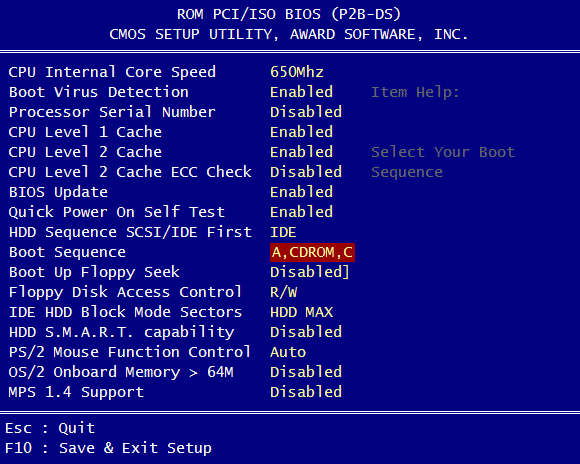Phoenix Bios Editor Pro
Bios Information Tool (BIT) v1.4/-File HP USB DOS Drive Creator/-File Phoenix Crisis Tool/-File. Phoenix Bios editor Pro So I have a copy of the Phoenix Bios editor, and I was trying to see if I could change anything with an old Trigem (oem-HP) board that has a phoenix bios core 4.07 release 6. It starts to open the rom file, but for just about every section of the bios, it pops up and says 'xxxx0 decompress error!

(updated 2016.05.17 for VMWare UEFI firmware extraction) One day or another, you may want to play with BIOS/UEFI firmware modification. But before jumping into physical motherboard flash alteration, where the consequences of a mishap can be difficult to salvage, experimenting with the BIOS/UEFI in a virtual environment sounds like a sound first step.
You have of course the opportunity to do so using, however the ubiquitous nature and ease of use of the (freely available) can turn the latter in a much better candidate for the job if you don't really care about the extra features that bochs brings in. This post details how one can extract the BIOS/UEFI firmwares used by the VMWare Player, and how to setup the player to use a modified one.
• Download and install VMware Player. The current version of VMware Player is 12, and the download can be obtained (freely, but after e-mail registration). Binaries are available for Windows and Linux, in both 32 and 64 bit versions. • Extract the BIOS from the VMware executables by following the instructions below: • Windows: Download and install (which any reasonable Windows user should have installed anyway). Then navigate to your VMware Player installation directory and locate the vmware-vmx.exe application (notice the -vmx here). It should reside in the same directory for 32 bit, or in the x64 directory for 64 bit.
Open it in 7-Zip and go to the.rsrc BINRES directory. For the BIOS (internally called bios440, as it emulates an intel 440BX chipset), you need to look for a file exactly 524 288 bytes (512 KB) in size. On current versions, there should be only one, called '6006'. This is the BIOS file we are after, so just extract it to a directory of your choice. For the UEFI firmware, you should look for a file that is 2 097 152 bytes (2 MB) in size. Because VMWare can emulate both 32 and 64-bit platforms, you will find that there exists 2 of these.
At the time of writing this article, just know that '6020' is the IA32 UEFI firmware and '6021' is the X64 UEFI firmware. • Linux: From a terminal, navigate to the directory vmware-vmx binary resides (default is /usr/lib/vmware/bin. Issue the following set of commands (copied from the: $ objcopy /usr/lib/vmware/bin/vmware-vmx -O binary -j bios440 --set-section-flags bios440=a bios440.rom.Z $ perl -e 'use Compress::Zlib; my $v; read STDIN, $v, '$(stat -c%s './bios440.rom.Z')'; $v = uncompress($v); print $v;' bios440.rom Remember that you can always use objdump -h to find the various sections before using objcopy, in case the BIOS is no longer called bios440.rom • Edit the BIOS or UEFI firmware as you see fit. Note that the BIOS VMware uses is of type Phoenix. If you are on Windows, you can download a full version of Phoenix Bios Editor Pro v2.1.0.0 from Intel under the name (or simply search for 'Phoenix' on the ). If you install this tool on Vista or later, you will have to run Phoenix Bios Editor Pro as Administrator, and possibly in a 32 bit environment, for it to work. • Once your BIOS/UEFI file is modified according to your needs, locate the Virtual Machine you plan to test your firmware with and copy your modified file into its directory.
Index:of.download link octoplus crack tool without box. I really thankful to Technical Micky solution to make a helpful tools.
Download anime english dub for free. The Angry Birds Movie (2016) Download. The Angry Birds Movie 2016 is an Animation, Action, Adventure, Comedy, Family anime Movie. The Angry Birds Movie 2016 – Finally find out why the birds are so angry.
Then, edit the.vmx file to add one of these lines, according to the type of platform you want to run. • For BIOS, you only need to add: bios440.filename = 'bios440.rom' • For 32-bit UEFI, you will need to have something like: firmware = 'efi' efi32.filename = 'efi32.rom' • For 64-bit UEFI, you will need: firmware = 'efi' efi32.filename = 'efi64.rom' • Run the image, and it should use your modified firmware. If you have simply modded the original BIOS using Phoenix Bios Editor, a good way to confirm that the VM is using your custom BIOS is to change the 'Quiet Boot Logo' section, which contains the VMware logos you see during BIOS execution. Also note that, as pointed out on, if you are usingVMWare Fusion, you may actually be able to extract the various embedded binaries using the -e switch (the page linked also provides a list of all the binaries you can extract). Sadly however, this switch doesn't apply for VMWare Player on Windows. I changed the DMI information (Vendor, Serial Number) and saved the BIOS but still the BIOS Serial Number shown in the VM is the one created by Vmware. I can't find a way to have the Serial Number of the VM set the physical machine value (displayed by dmidecode -t1).